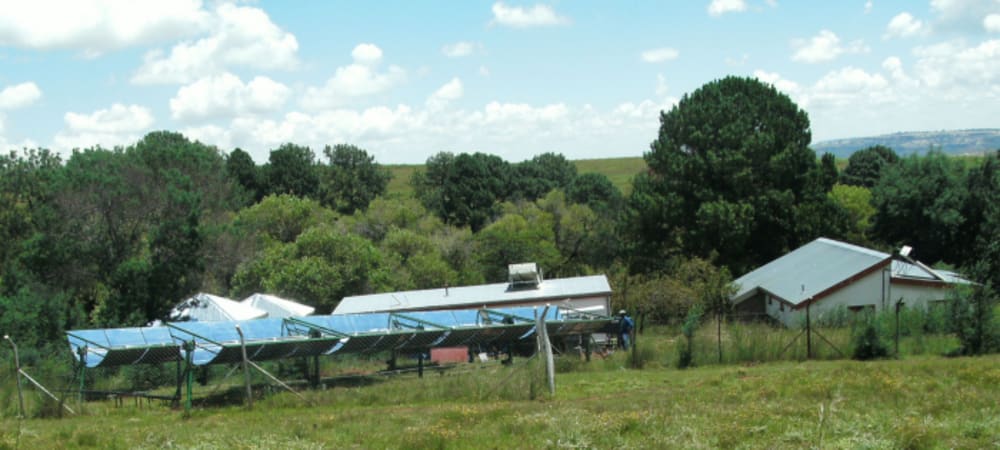Access to affordable, renewable energy generation is necessary to drive sustainable development and global access to quality health care and education. In response to this demand, we have developed a novel solar thermal electricity and thermal power plant technology that has 30-50% lower lifecycle costs than currently available photovoltaic panels and diesel generators. The systems are designed to be built with locally available materials and skills to support job creation and boost local economies. This technology provides an affordable option for sustainable growth in developing countries, one which additionally couples use of clean energy technologies with improved rural service delivery and local economic growth. This system is optimized for use at rural institutions to maximize impact by enabling improved provision of fundamental health and education services that are currently badly lacking in rural areas. The availability of energy at rural health clinics and schools can directly benefit thousands of patients and students each year, with benefits cascading throughout surrounding communities including an overall reduction in poverty, better living conditions, and improved quality of life. By delivering renewable solar energy, the proposed electrification scheme also contributes to lowering the risks related to climate change and decreases brushwood collection and related land degradation.
Our approach involves downscaling a solar thermal power plant and using an Organic Rankine Cycle (a Solar ORC) as a sustainable, renewable, and affordable energy option for rural locations otherwise likely to install Diesel capacity. Our Solar ORC is inspired by large concentrating solar thermal power plants but redesigned for low cost off-grid deployment by using simple manufacturing methods and repurposed, already mass-manufactured OEM equipment. Our patent-pending innovations include the low cost collector design, the optimization of HVAC components as expander-generators, and the controls that enable autonomous operation of the plant at small scales in remote areas. The Solar ORC generates emissions-free electricity at less than $0.20/kWh compared to $0.30 for PV or $0.50 for diesel. It also provides cogeneration, i.e., thermal energy for space or water heating, at no extra cost.
This year STG will finalize two full scale (3 kWe or 25kWh/day) installations, at a health clinic in Africa and Eckerd College in the US.
We believe that this technology coupled with a localized manufacturing strategy has the potential to provide key jobs and economic stimulation in countries currently struggling to promote domestic economic growth. Because the Solar ORC can be manufactured, installed, and maintained locally, financial and job benefits accrue directly to local citizens, and by providing power to critical health and education facilities its impact is multiplied. Energy provision for rural institutions in underserved areas represents a substantial untapped market, totaling over US$1B globally for health clinics alone and over US$2B for off-grid schools. To help our local partners serve this global market, we will provide technology transfer, training, and support to allow them to take advantage of this unique opportunity to produce and distribute a novel renewable energy system.
To learn more visit us at http://www.stginternational.org
Like this entry?
-
About the Entrant
- Name:Matthew Orosz
- Type of entry:teamTeam members:Matthew Orosz
Amy Mueller
Bryan Urban
Elizabeth Wayman - Software used for this entry:EES, Solidworks, Sketchup, Matlab, MasterCAM
- Patent status:pending








